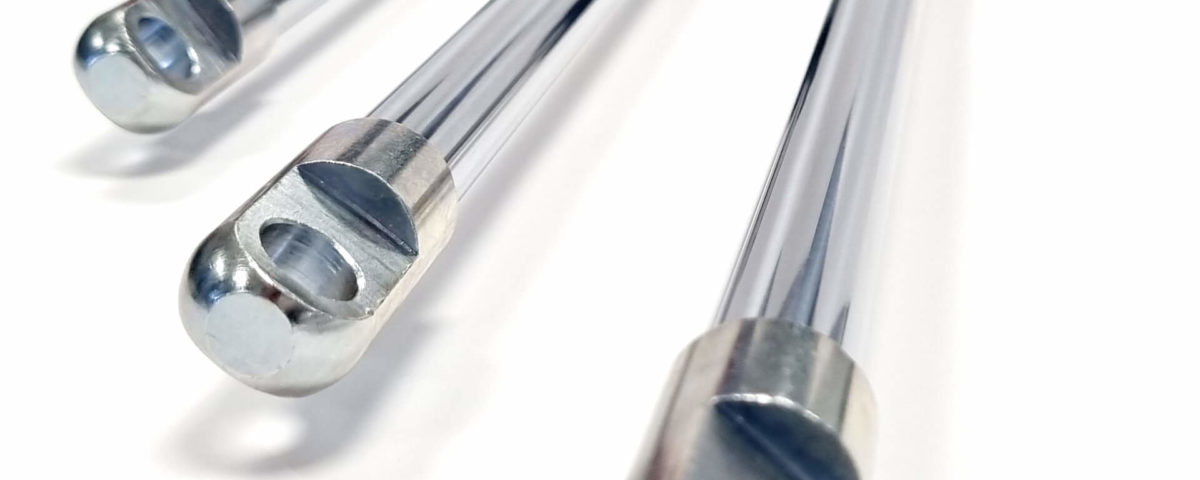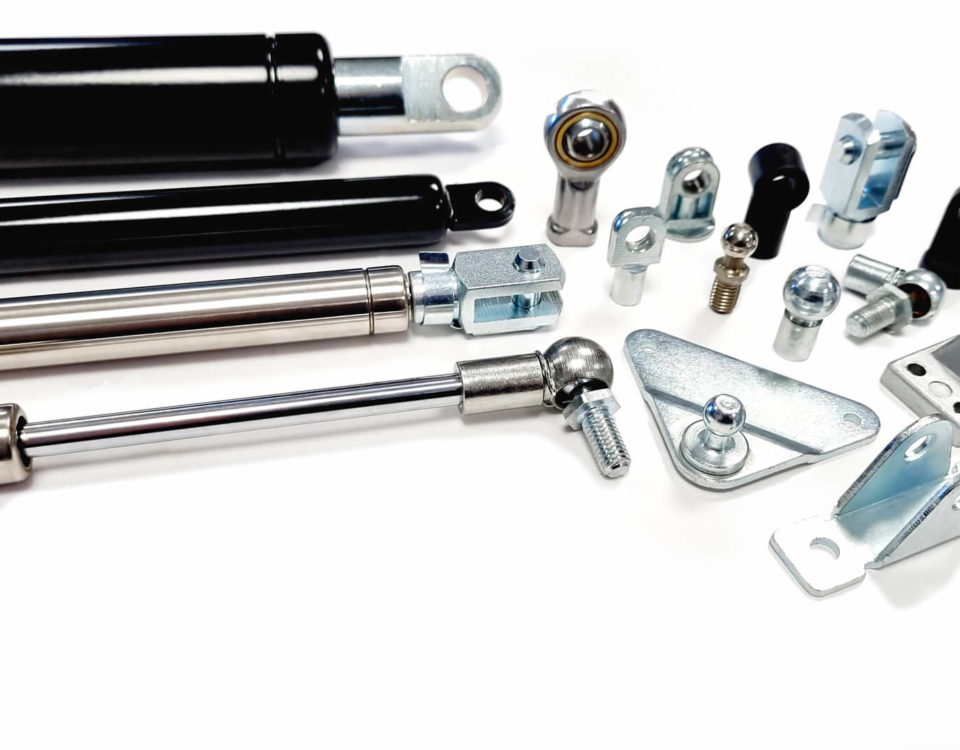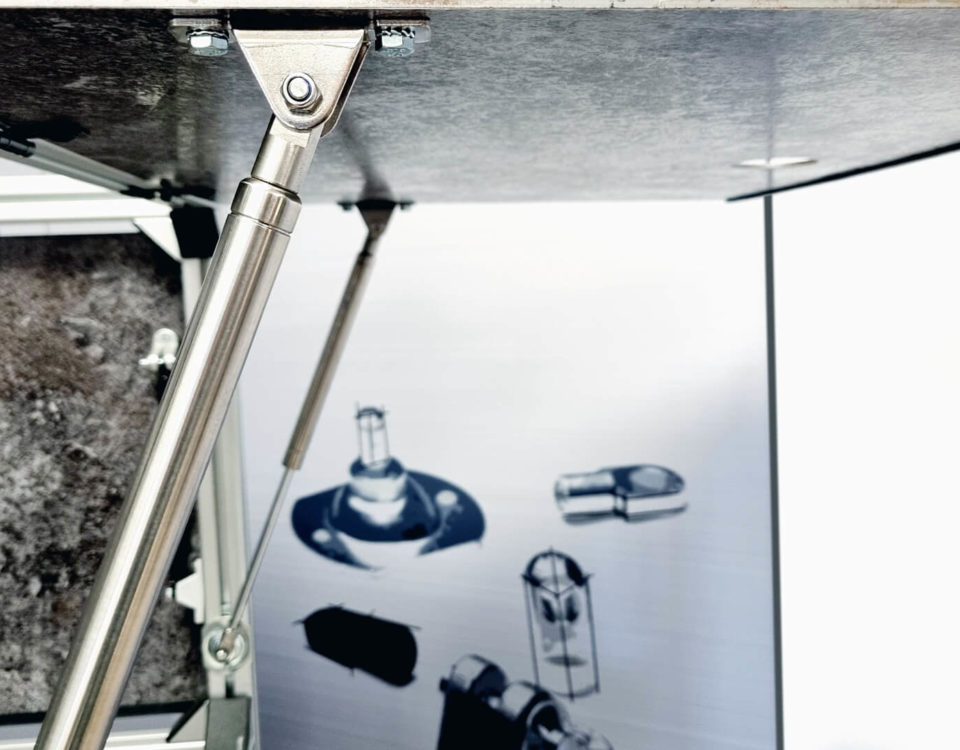Gas springs: Learn to use them safely

Get an overview of the range of gas springs: what is their application?
July 14, 2021
7 types of machinery and equipment with gas strut
July 16, 2021Gas springs are really handy helpers for everyday tasks at home, work, as well as the handling of large loads in heavy industry. But do you know how to use them safely?
How to interpret gas spring data?
To be able to work with gas springs in a safe and efficient manner, you first need to understand all of the numerical values.
Our product dimensions are given in millimeters (mm), pressure in Newton (N) and thermal values in Celsius (°C).
Install with care
If you don’t have experience with gas spring installation, it is best to leave it to the professionals. Want to do it yourself? Here are a few words of advice before you start.
- Store properly before use. The devices can be stored horizontally at room temperature for a maximum of three months. For prolonged storage or storage at higher temperatures, place them vertically with the rod facing down.
- Gas springs must be mounted with the rod facing downward in the closed position (with a minimum inclination of 15°). If you want to mount them horizontally or with the piston rod facing upwards, please contact us and we will prepare a customized solution for you.
- Gas springs must not be subjected to any lateral pressure.
- For gas springs with a welded eyelet, allow a 3 to 0.5 mm clearance on the rod diameter and a 0.5 – 1 mm clearance on both sides of the eyelet.
- Want to varnish the spring? Don’t forget to protect the piston, as varnish would damage it.
- Prevent the spring’s contact with electrical voltage, grinder sparks, paints, and corrosive products.
The use of gas springs has its rules, too
Before choosing a gas spring, think about how intensely it will be used. The classic spring should be lifted no more than five times per minute. If you want to use the spring more frequently, please contact us. We will design a more durable solution.
The guaranteed life of gas springs is 30,000 cycles. The expected life loss after these cycles is up to 15% (the level varies depending on stroke length and pressure).
The operating temperature of our springs ranges from -30°C to +80°C. For applications at higher temperatures, gas spring resistance up to +200°C can be achieved by special seals. Remember that the temperature also affects the output force of the spring due to the expansion of nitrogen inside the spring (about 1% per 3°C). The gas spring pressure drops with decreasing temperature and, of course, increases with rising temperature.
Do not use solvents to clean the gas spring. Protect it from any shocks. If you want to dismantle it, avoid disassembly because there is a risk of compressed gas leakage.
How to proceed after the end of the spring’s life
Gas springs have a certain life depending on the extent and conditions of their use. Read about the right time to replace gas springs in our older article.
When dismantling gas springs, follow these steps:
- Before you start, arm yourself with safety glasses, a hand saw, and a rag.
- First you need to release gas from the spring: secure the gas spring in a vice and saw off the piston at a distance of 30 – 35 mm from its edge.
- Stop cutting when you hear the characteristic pressure relief sound.
- Check that all gas is released from the spring. If it is, you will be able to move the piston freely with your hand.
If you have any further questions about basic or advanced handling of gas springs, do not hesitate to contact us.





